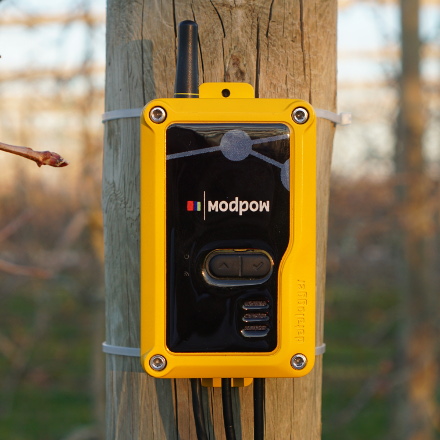
March 14, 2017
Josep Blay, Professor in the University of Girona
What happened to our water?
As an agricultural professional, I live and work on the lands of Bajo Ter and el Daró. I believe like most of my fellow citizens, I am highly concerned because of the media’s use of the most indispensable good of nature: water.

February 11, 2017
Jordi Barceló, Co-Founder/ CEO of ModpoW
Nursery Technology Applied to the Field
The revolution of the technification of agricultural production is an increasingly palpable fact, and many companies based on precision agriculture technologies are emerging and consolidating in the sector.

January 20, 2017
Raül Muxach, Journalist at Radio Girona
More rice with less water
Growing rice with less water using between 30 and 50% less seeds on planting is already possible without the production being affected. IRTA of Mas Badia for three years now, has experienced saving methods in private fields with very good results.

January 03, 2017
Akis International
The water balance in soils with passion fruit cultivation under the El Niño phenomenon.
The interannual climatic variability has been steadily increasing in recent years in Colombia, resulting in an increase in the economic and social vulnerability of small and medium-sized farmers, especially due to the lack of resources and specific measures and actions to reduce the negative effects; As well as to the difficult adaptation of the crops to the anticipated climatic changes.

February 01, 2017
Jordi Montilla, Student of Geology Degree - University of Barcelona
The creation of deltas from glaciers.
When thinking of delta, what comes to mind is the image of a set of sediments deposited at the mouth of a river. Curiously, the southernmost part of Catalonia is formed by one of them, namely the Ebro Delta, where the mouth of the Ebro river is located.

November 30, 2016
Noemí Mateo
Biochar as Soil Amendment.
Biochar is the product of thermal degradation of organic materials in the absence of oxygen (pyrolysis). This pyrogenic product has properties that make it an organic amendment suitable for improving the physical and chemical fertility of soil. The use of biochar dates back to 500-1500 a.C.,When the Brazilian aborigines of the Amazon incorporated it into soil, and it became the so-called Black Lands of the Indian.

November 14, 2016
Victor Montilla
Plague or Consequence
Despite the recent changes in weather in the Peninsula, (storms, snow, ice, etc.) during the past few weeks, the average temperature has increased. In the media, the concepts of "climate change" or "global warming" appear increasingly, but why are we becoming more and more aware of this?

May 19, 2016
Antoni Baltiérrez, Agronomical Engineer
Things to consider for new vineyards
Vines are crops that grow extensively throughout Spain, they are traditional and dry-land crops.

December 15, 2016
Francisco Fontseca
The visibility of a Drone.
One of the alternative ways of examining changes in the aerial part of a crop during its cycle is through the measurements of the fraction of soil covered by crop vegetation, which is closely related to the canopy leaf area.

April 10, 2016
Francisco Fontseca
The correlation between soil microorganisms and plant fertility management.
Soil is one of the most complex natural systems that exist on the planet, made up of microorganisms (bacteria, fungi, viruses, protozoa, etc).
The Cloud and The Fog in the Agriculture
Humans has generated 90% of digital information in all of history in only the last two years. Messages, photos, videos or any type of data is continuously created every day and stored in the cloud in order to be recovered later. But what can we do with all this information in addition to storing it?
Agricultural Remote Sensing: truths and uncertainties about the drone revolution.
The emergence of drones in different business and scientific sectors is undeniable today. It is a fact that, during the last years, agriculture has ceased to look only from the ground point of view to start observing crops from the sky.
The interaction between irrigation-fertilization and more efficiently delivered water results in better fertilization.
While the vast majority of fruit crops is using fertirrigation now, it is important to emphasize a few things to improve water and nutrient status of our crops.
The internet and smartphones: the present and future of agriculture
The challenges of agriculture in the twenty-first century are many. One of the main challenges will be to feed up to 2,000 million more people in the world by the year 2050. The only way to increase the food production is with more information and knowledge.
Drones applied to agriculture, fact or fiction?
It is known that drones are the future. But what can drones do for agriculture? Can they pick fruit and put them into baskets? Why do drones fly and take pictures of crops?
Saving water from the "root"
Throughout the world, irrigation (water for agriculture, or growing crops) is probably the most important use of water. What can we do to save water for our future?
How does the WSN (Wireless Sensor Network) help us understanding the climate change?
The aim of the project Climadat is to study how global climatic influences at a great distance affects the local climate, and also how local phenomena affect global climate. The ModpoW data loggers, in this project, offer a high-prisicion measurement.

Ready
to start
saving
water?
to start
saving
water?
ModpoW Newsletter
Recent Posts
What happened to our water?Nursery Technology Applied to the FieldMore rice with less waterThe water balance in soils with passion fruit cultivation under the El Niño phenomenon.The creation of deltas from glaciers.Biochar as Soil Amendment.Plague or ConsequenceThings to consider for new vineyardsThe visibility of a Drone.The correlation between soil microorganisms and plant fertility management.


